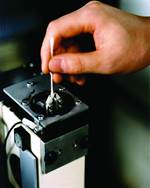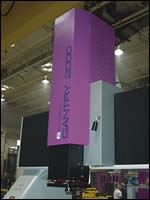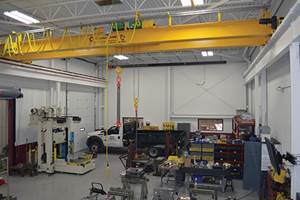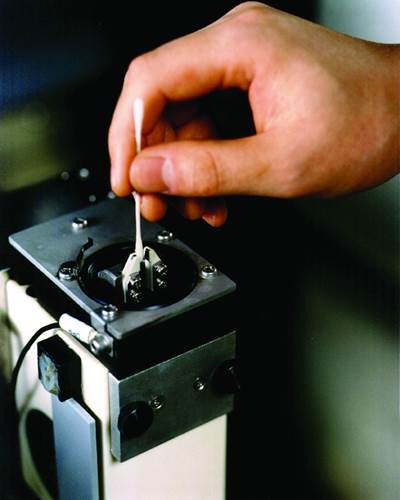The Key to Fire Protection in Your Shop
Five considerations for EDM fire suppression system selection.
Today’s EDM machines are typically very safe; however, in spite of safety features fires on sinker EDMs still happen. These fires, coupled with the ready supply of flammable liquids in EDM environments, can go from a small spark to a devastating fire in moments. The key to protecting against these fires is fast, yet reliable, detection and suppression that is not prone to false discharges.
Fire suppression is an important addition to your systems, and many EDM machines come with fire suppression equipment installed at the factory. For those machines that are not protected there are several systems on the market that can be added.
When researching fire suppression systems five items to look for are:
- Will both the detection and agent delivery work as designed regardless of the position of the ram? Units that mount on one side of the ram may not detect a fire starting on the other side of the ram or may not deliver agent effectively to properly suppress the growing fire.
- Can the system interface with the machine controls to shut down the machine and interface with a local alarm or a paging system? If there is a fire, quick shutdown of the unit will help fight re-ignition of the fire. The interface will ensure that a problem will be quickly rectified and that the machine is returned to service in a timely manner, helping to avoid missed deadlines and to optimize production.
- Be certain to select a fire suppressing agent that will effectively suppress the fire, but not contaminate the machine’s oil. Replacement of oil costs money and time. Use of clean agent alternatives like CO2 will effectively fight the fire and not add contaminates to the oil should a discharge occur.
- Use detection that will be fast, but reliable. Some optical type detection systems will operate quickly, but may be prone to false discharges due to other processes in the factory—sometimes as simple as a lit cigarette or a torch. False discharges can interrupt produc-tion and also disable the fire suppression system until the unit can be reset, leaving a machine unprotected. Alternatively, sprinkler-head type fire suppression units frequently require a great deal of heat build-up before activating, potentially delaying suppression long enough for damage to be done to the unit or for the fire to spread beyond the machine.
- Where possible, ensure that the system uses a minimal amount of metal near the oil’s surface. With the electrical dis-charge from these machines, less metal in the portions of the fire suppression that are near the oil is very desirable.
While fire suppression is a critical part of a shop’s safety equipment, it does not make up for improper use of these machines. Always be certain to follow the manufacturer’s instructions and warnings for the operation of the machine. Never circumvent or disable safety features on a machine regardless of the presence of a fire suppression system.
It is impossible for those who have never seen one of these fires to fully appreciate the speed at which they grow or the danger they present. Following proper maintenance and use procedures on these machines coupled with the added safety of a fire suppression system can help ensure that a shop will not feel the effects of one of these machine, and frequently business, crippling events.
Related Content
The Role of Social Media in Manufacturing
Charles Daniels CFO of Wepco Plastics shares insights on the role of social media in manufacturing, how to improve the “business” side of a small mold shop and continually developing culture.
Read MoreHow to Improve Your Current Efficiency Rate
An alternative approach to taking on more EDM-intensive work when technology and personnel investment is not an option.
Read MoreEditorial Guidelines: Editorial Advisory Board
The Editorial Advisory Board of MoldMaking Technology is made up of authorities with expertise within their respective business, industry, technology and profession. Their role is to advise on timely issues, trends, advances in the field, offer editorial thought and direction, review and comment on specific articles and generally act as a sounding board and a conscience for the publication.
Read MoreThe Trifecta of Competitive Toolmaking
Process, technology and people form the foundations of the business philosophy in place at Eifel Mold & Engineering.
Read MoreRead Next
Maintaining a Wire EDM Machine
To achieve the ultimate capability and level of productivity from your wire EDM on a consistent, repeatable and reliable basis, regular maintenance is a required task.
Read MoreReasons to Use Fiber Lasers for Mold Cleaning
Fiber lasers offer a simplicity, speed, control and portability, minimizing mold cleaning risks.
Read MoreHow to Use Continuing Education to Remain Competitive in Moldmaking
Continued training helps moldmakers make tooling decisions and properly use the latest cutting tool to efficiently machine high-quality molds.
Read More





















